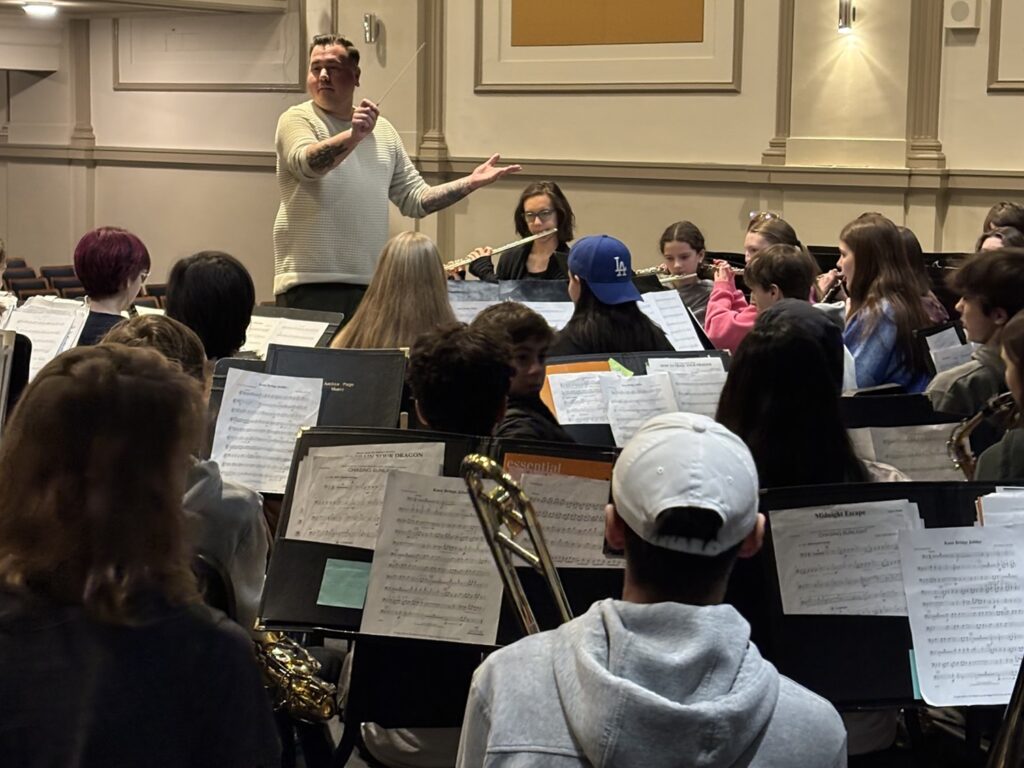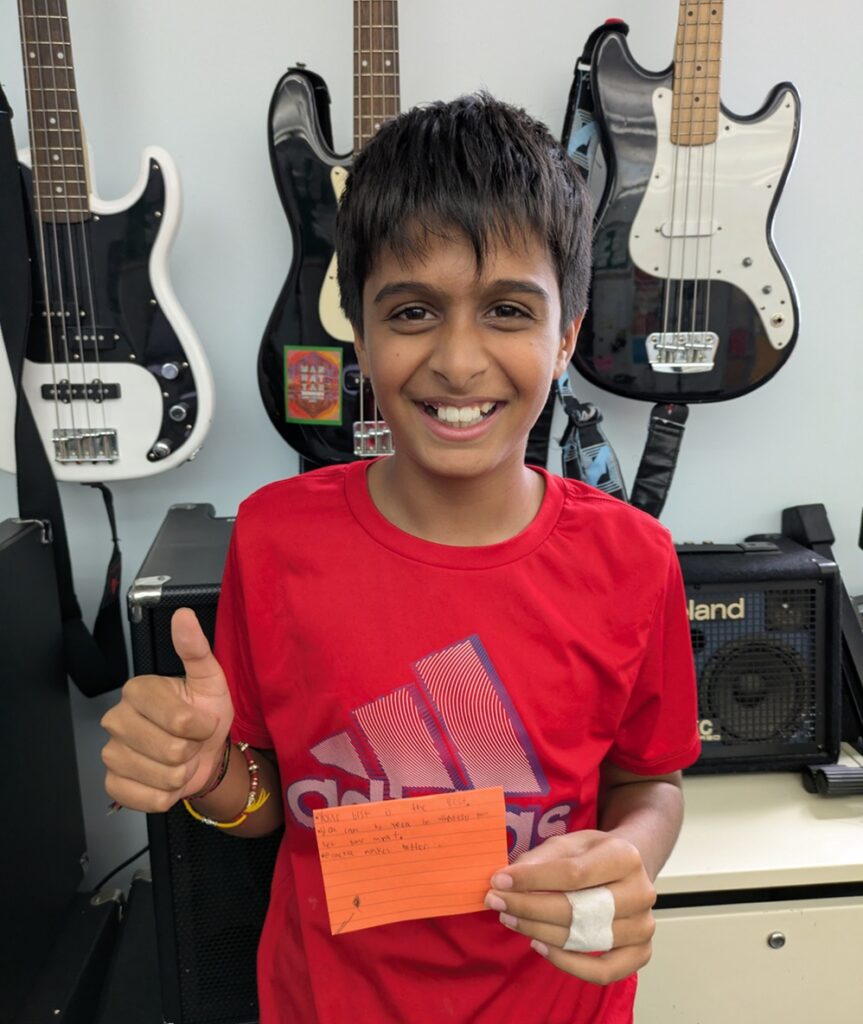Tagged Under:
6 Steps to Incorporate a Growth Mindset in your Classroom
A Florida music educator embraces the concept that students, when faced with challenges, can improve their abilities not only in music but in everything they do.
During the first week of every school year, Trevor Tran surprises his music students at Fort Myers High School in Southwest Florida with a presentation about a seemingly unrelated topic: the human brain.
“A lot of times with my students, the science thing kind of goes over their heads. It’s a bit too much for them,” Tran says.
When he starts talking about the brain and neurons, students inadvertently protest and say: “This is not biology class. Why are we learning this?”
However, Tran continues and discusses how the brain is very connected to music because it is through the brain that humans learn. Tran — who just finished his fifth year as head of performing arts and director of vocal arts at Fort Myers High — says it is very important that students know how they learn and develop.
He explains, “When I do an activity, my body sends an electric signal up neural pathways to my brain. The first time I do the activity the electric signal goes up a pathway that is weak and narrow. But if I keep doing that activity, eventually that pathway expands. This allows the signal to travel faster, and the activity becomes easier.”

For the students who have trouble understanding, Tran loves this analogy of a forest: “If you come across a wild forest that no one’s really been in and you walk through the forest for the first time, there will be obstacles,” he says. “It’s going to be very difficult to walk through the forest the first time. But if I walk through the forest every day for 30 days — taking the same exact pathway — it gets easier and easier.”
Tran explains that this is how learning music works, too. “When you first pick up your instrument or start to sing, a lot of times it won’t be easy. But the more and more you do it, the more and more adept you get at it,” he says.
“When students understand how they learn and the key role of repetition, then they can apply that to everything,” Tran says. “This gives them the knowledge to unlock their own education.”
Growth Mindset
 Tran, who recently left his job to begin a doctoral program in choral conducting at the University of Maryland, uses his presentation on the brain to introduce Growth Mindset, a philosophy created by psychologist Carol Dweck where people believe they can grow their intelligence and abilities. The fixed mindset, by contrast, is the belief that attributes and abilities are unchangeable, and you are born with what you have.
Tran, who recently left his job to begin a doctoral program in choral conducting at the University of Maryland, uses his presentation on the brain to introduce Growth Mindset, a philosophy created by psychologist Carol Dweck where people believe they can grow their intelligence and abilities. The fixed mindset, by contrast, is the belief that attributes and abilities are unchangeable, and you are born with what you have.
Tran says, “Dweck’s research has found that the more people believe they can change their abilities … they are more able to overcome adversity and have better self-esteem because they believe change and improvement are possible. With Growth Mindset, when people fail, they understand that it’s part of the growth process. When you have a fixed mindset and you start to find failure, it can be very personal. You believe there is no way to change your abilities that led to the failure.”
Tran, who was recognized as a 2023 Yamaha “40 Under 40” music educator, offers the following six steps to incorporate a Growth Mindset in your classroom.
1. Prove to students that, yes, our brain and abilities change with repetition.
Tran says, “The discussion of the brain and how people learn helps prove that change and improvement are the result of effort and repetition. When students understand this, they begin to believe that they can get better and that leads to greater intrinsic motivation, self-esteem and perseverance.”
Besides the other examples mentioned previously, Tran also uses a brain study on deaf individuals to show how our brains change. In the study, scientists examined the brains of individuals with and without hearing impairments. The people who were born deaf relied more on their sight than hearing in their daily lives. Through brain scans scientists found that the deaf individuals developed a larger visual cortex than the non-deaf individuals. These scans demonstrate that our brains adapt and accommodate to the senses we use more.
“All these examples provide evidence for our students, and proof is necessary to build a belief in growth,” says Tran.
2. Set goals for your students, which ensures they have something to aim for.
 “I always like to think of it as if you’re going on a trip: You want to put the address into your GPS, so you know where you’re going,” Tran says.
“I always like to think of it as if you’re going on a trip: You want to put the address into your GPS, so you know where you’re going,” Tran says.
He sets goals for students in two ways: 1) broader class or ensemble goals that the kids do together and 2) specific individual goals. Tran recommends looking at your state’s standards as a starting point for your class goals. Those standards can then be broken down to smaller daily or weekly objectives.
For fostering individual student goals, Tran does one-on-one vocal check-ins to work on specific things that might not apply to other students in the class. He analyzes how they have done so far and helps them craft their own set of objectives that they want to achieve.
3. Be diligent in directing students to work hard and practice their music skills consistently.
Sometimes, when Tran leads students in warm-ups at the beginning of class, the students whine: “Do we have to warm up?”
“A lot of times, students don’t yet understand that drive to continually work on something,” Tran says. “The tough part is to be diligent and stick to executing those skills every single day.”
He finds it helpful to mix things up and change the warm-ups regularly and do something a little different that works the same set of skills.
“It keeps them on their toes,” Tran says. “If you do the same warm-up every single day, the students come in and they check out.”
Teachers should differentiate their instruction and remind students that practice is how we get better at building our musical skills, he says.
4. Give feedback that promotes a Growth Mindset and give it in a variety of ways.
 “Person” and “Process” feedback are two types of responses that affect mindset. Person feedback says: “You’re a great musician.” which praises the ability. Process feedback, by contrast, acknowledges effort: “You did really well on the solo during the concert because you were practicing that.”
“Person” and “Process” feedback are two types of responses that affect mindset. Person feedback says: “You’re a great musician.” which praises the ability. Process feedback, by contrast, acknowledges effort: “You did really well on the solo during the concert because you were practicing that.”
According to Tran, “It’s really important to think about how we give feedback. Are we being specific and are we really praising the effort to promote a Growth Mindset?”
In addition to the type of feedback, educators should also look at different ways to deliver that feedback. For instance, if you’re always verbalizing feedback, you may benefit from modeling the correct sound or using a kinesthetic.
“These days students have attention spans that are shorter because of all the fast changes in the technology they use,” Tran says. “We can find more success by changing how we present the exact same information.”
Additionally, Tran advocates for allowing your students to act on the feedback and practice it multiple times.
“There are rehearsals where you’ll have teachers who will say something, give feedback, and then go to completely different sections and not allow students to try it,” Tran says. “Close that feedback loop. Give them the opportunity to do it correctly and have your students do it again so it’s really ingrained.”
5. Encourage self-assessment in your students
 Students should review what they have accomplished and the feedback they have received to assess their performance. When Tran does one-on-one check-ins with students, the rest of the class engages in self-reflection.
Students should review what they have accomplished and the feedback they have received to assess their performance. When Tran does one-on-one check-ins with students, the rest of the class engages in self-reflection.
Tran boils it down to three simple questions: “Where am I?” “Where do I want to be?” “What do I need to do to get there?” These three questions are a good starting point for reflection.
“It’s also important to ask them to be specific,” he says. “They might say, ‘I improved my breathing.’ I push them to be specific about how they are getting better. Have you improved on your breath energy? Are you better now taking a low breath?”
Another quick way Tran uses self-assessment is by projecting a class goal and asking students how confident they are on a scale of 1 to 5. Based on the answers from the class, he can help the less confident students or even pair the more confident students with the less confident ones.
6. Be consistent with students and continually celebrate their growth and successes.
“Consistency in working on their musical skills and reminding them of their class and individual goals is important. When students achieve those goals, those successes should be celebrated because it helps to take in this idea of growing through effort,” Tran says.















